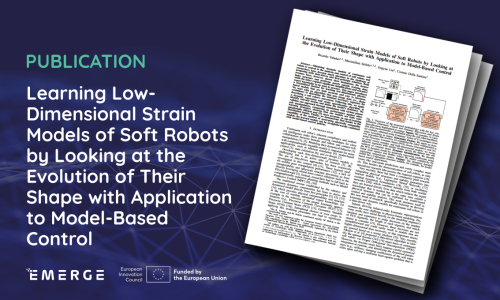04 June 2025


Obtaining dynamic models of continuum soft robots is central to their analysis and control, and researchers have devoted much attention to the challenge of proposing both data-driven and first-principle solutions. Both avenues have, however, shown their limitations; the former lacks structure and performs poorly outside training data, while the latter requires significant simplifications and extensive expert knowledge to be used in practice.
In this work, EMERGE partners from Delft University of Technology introduce a streamlined method for learning low-dimensional, physics-based models that are both accurate and easy to interpret. The authors start with an algorithm that uses image data (i.e., shape evolutions) to determine the minimal necessary segments for describing a soft robot’s movement. Following this, they apply a dynamic regression and strain sparsification algorithm to identify relevant strains and define the model’s dynamics. They validate the approach through simulations with various planar soft manipulators, comparing its performance against other learning strategies, showing that their models are both computationally efficient and 25x more accurate on out-of-training distribution inputs. Finally, they demonstrate that thanks to the capability of the method of generating physically compatible models, the learned models can be straightforwardly combined with model-based control policies.
Read the paper in the link below.


